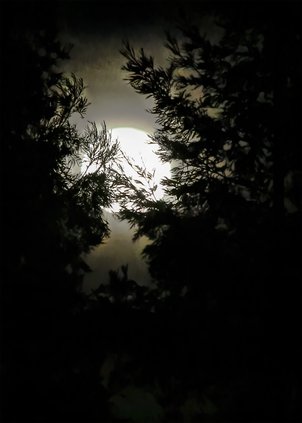Although there has been plenty of rain in the Riverbank area recently, at least for a short time last week, the evening sky was clear enough to notice the full moon rising in the night sky.
The Tuesday, Feb. 19 event happened shortly after sunset, as the bright disc rose into the eastern sky. As it rose and the sky darkened, hopes for spectacular photography opportunities dimmed.
Low in the sky and illuminating the horizon, the moon in the Riverbank area gradually climbed to be shrouded in wispy clouds, diffusing its light and making it hard to see – and photograph – its cratered surface.
This time, it’s called a ‘Super’ Snow Moon, so named for two phenomena associated with the month.
Colloquial names for the full moons appearing over the year have been given names by our ancestors, because in ancient times, it was common to track the changing seasons by following the lunar month rather than the solar year, which the 12 months in our modern calendar are based on.
For millennia, people across Europe, as well as Native American tribes, named the months after features they associated with the Northern Hemisphere seasons, and many of these names are very similar, or identical, according to several sources.
Today, we use many of these ancient month names as Full Moon names. A common explanation is that Colonial Americans adopted many of the Native American names and incorporated them into the modern calendar.
However, it seems that it is a combination of Native American, Anglo-Saxon, and Germanic month names which gave birth to the names commonly used for the Full Moon today.
The February full moon is called the Snow Moon because, presumably, snow is routinely found on the ground. Here in the nearby Central Sierra Mountain Range, it is certainly the case this year, with 150 percent of the average yearly snowpack in April showing up already, as reported earlier this month.
This year, the Snow Moon combines with being closest to Earth, becoming a Super Snow Moon.
Some North American tribes named it the Hunger Moon due to the scarce food sources and hard hunting conditions during mid-winter, while others named it the Storm Moon.
About once every 19 years, February does not have a Full Moon, known as a Black Moon. In 2018, this was the case in most time zones. Instead, January and March have two Full Moons each, creating a double Blue Moon.





